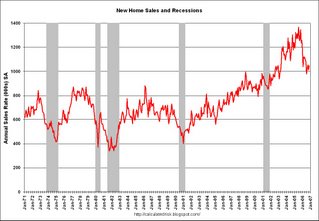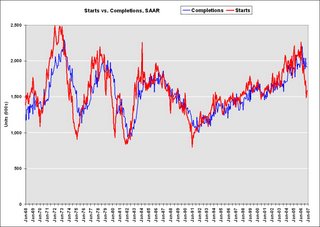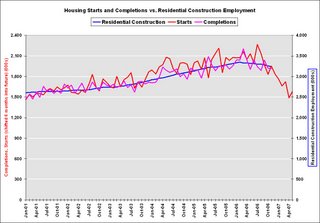For residential real estate, the outlook for 2007 ranges from mildly positive to awful. The major markets that do least badly will be "revenge of the nerds" cities like Dallas and Houston that the boom bypassed. Even if all they generate is low-single-digit price gains, they will look good by comparison. Seattle and Raleigh, N.C., with healthy job growth, should also do O.K. The biggest losers will fall into one of these groups: cities like Detroit that are suffering economic contractions; cities like Los Angeles, San Diego, and others in California where prices are extraordinarily high and have barely begun to adjust; and cities like Miami, Las Vegas, and Phoenix that have a huge overhang of unsold houses or condos.
Advice to homeowners: If you need to sell and you're not getting much interest, cut the price by an extreme amount. If you make halfhearted cuts, you'll remain overpriced and you'll follow the market all the way to the bottom. Advice to buyers: Bargain hard. Many sellers are still asking for too much. "As tough as our market's been, the toughest thing is to get sellers to understand that prices aren't going up 18% to 20% a year anymore," says Ned Redpath, head of Coldwell Banker Redpath & Co. Realtors in Hanover, N.H.
In some ways, a story on housing doesn't even belong in the Investment Outlook issue, because regular folks shouldn't be taking a one-year perspective on the places they live. If you really need to know what prices are going to be doing, say, six months from now, it probably means you've worked yourself into some kind of corner. For the long term, housing is still a good bet for most homeowners because in addition to any capital gain, it provides a unique annual dividend: a roof over your head.
THAT SAID, RIGHT NOW is not the ideal time to buy or move up, even with the recent price declines. The inventory of existing homes shot up 34% from October, 2005, to October, 2006, and now stands at nine months' worth of condos and seven months' worth of single-family houses at the current rate of sales. That backlog will take a long time, and a lot of price-cutting, to clear out. One housing bear, Ian Shepherdson, chief U.S. economist of High Frequency Economics in Valhalla, N.Y., guesses that prices nationally could fall 5% to 10% from the end of 2006 to the end of 2007, going by the Office of Federal Housing Enterprise Oversight housing price index. Using that same measure, Goldman, Sachs & Co. (
GS ) predicts a 3% decline from 2006 to 2007. Before 2006, the index' worst performance since its origin in 1975 was a 0.3% increase in 1990. The OFHEO numbers don't cover the highest- and lowest-priced homes, which will probably do even worse, says Economy.com Chief Economist Mark Zandi.
The Federal Reserve is likely to help the market in 2007 by cutting short-term interest rates, which will make adjustable-rate mortgages cheaper. Offsetting that, Zandi notes, is the fact that banks are being required to toughen their standards for exotic loans such as interest-only and option-payment mortgages. That will make it hard for people with marginal incomes to buy or refinance.
Housing prices were pushed up in part by get-rich-quick speculation. Now real estate has lost its grip on the public's imagination. Says Richard J. DeKaser, chief economist of National City Corp. (
NCC ) in Cleveland: "We're looking at several years of weak home prices. It'll return to the time when no one is talking about real estate." Oh, well. You can still take a flier on Google Inc. (
GOOG ).
 Click on graph for larger image.
Click on graph for larger image. Click on graph for larger image.
Click on graph for larger image.










